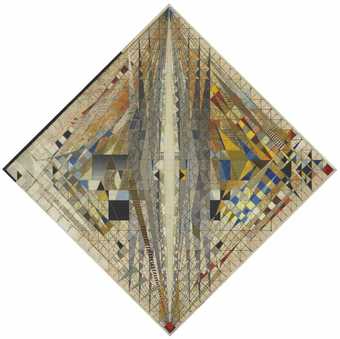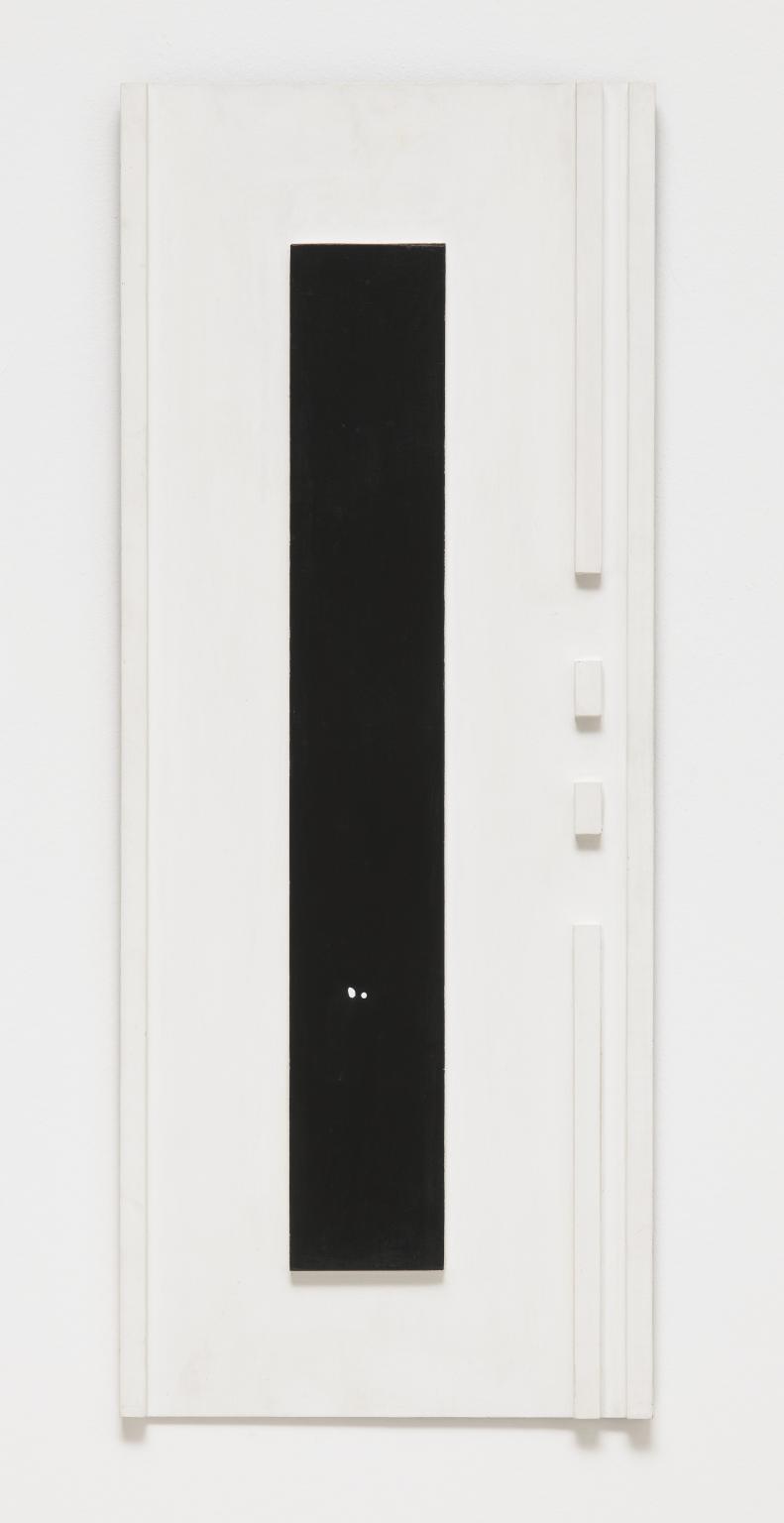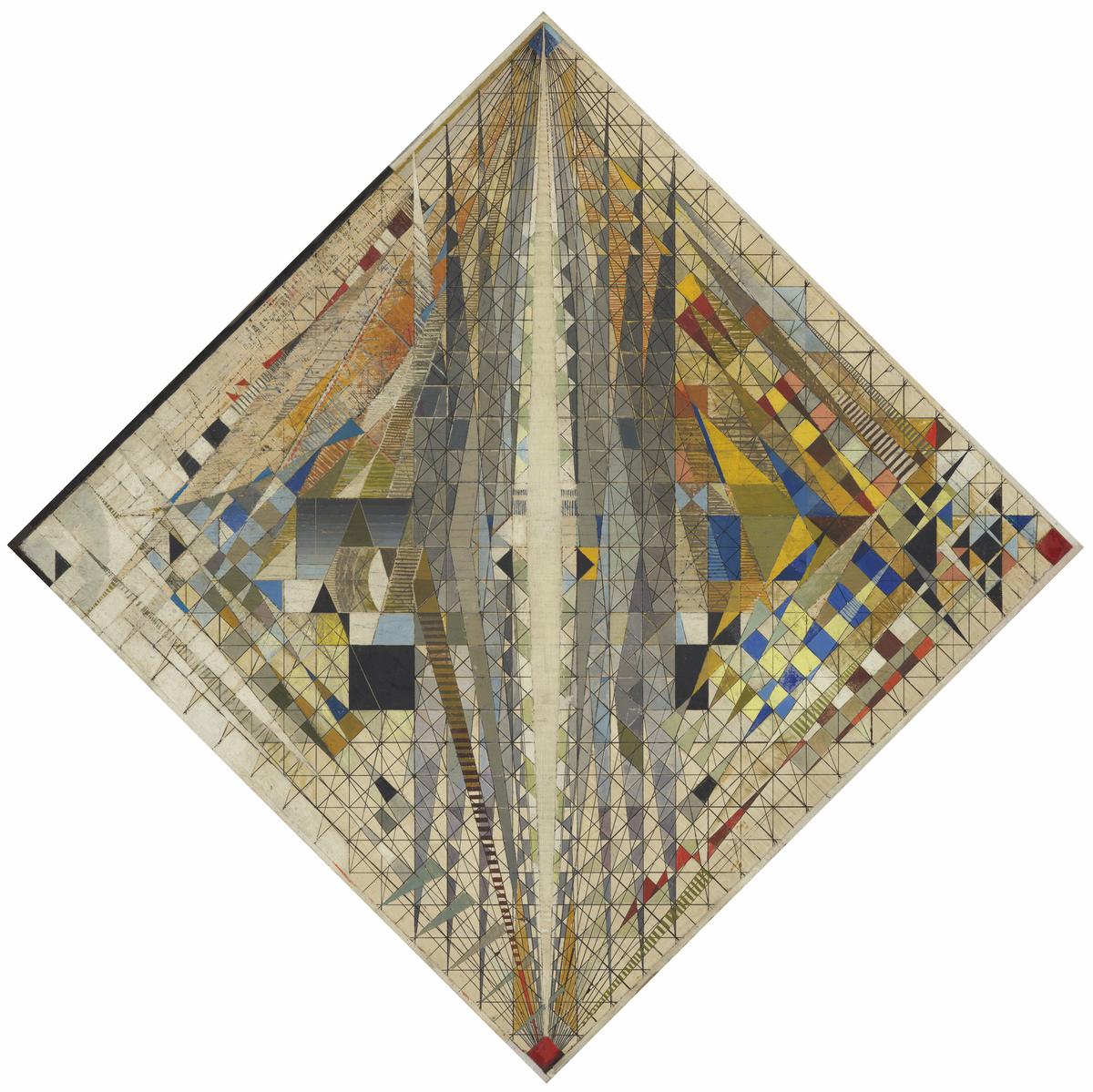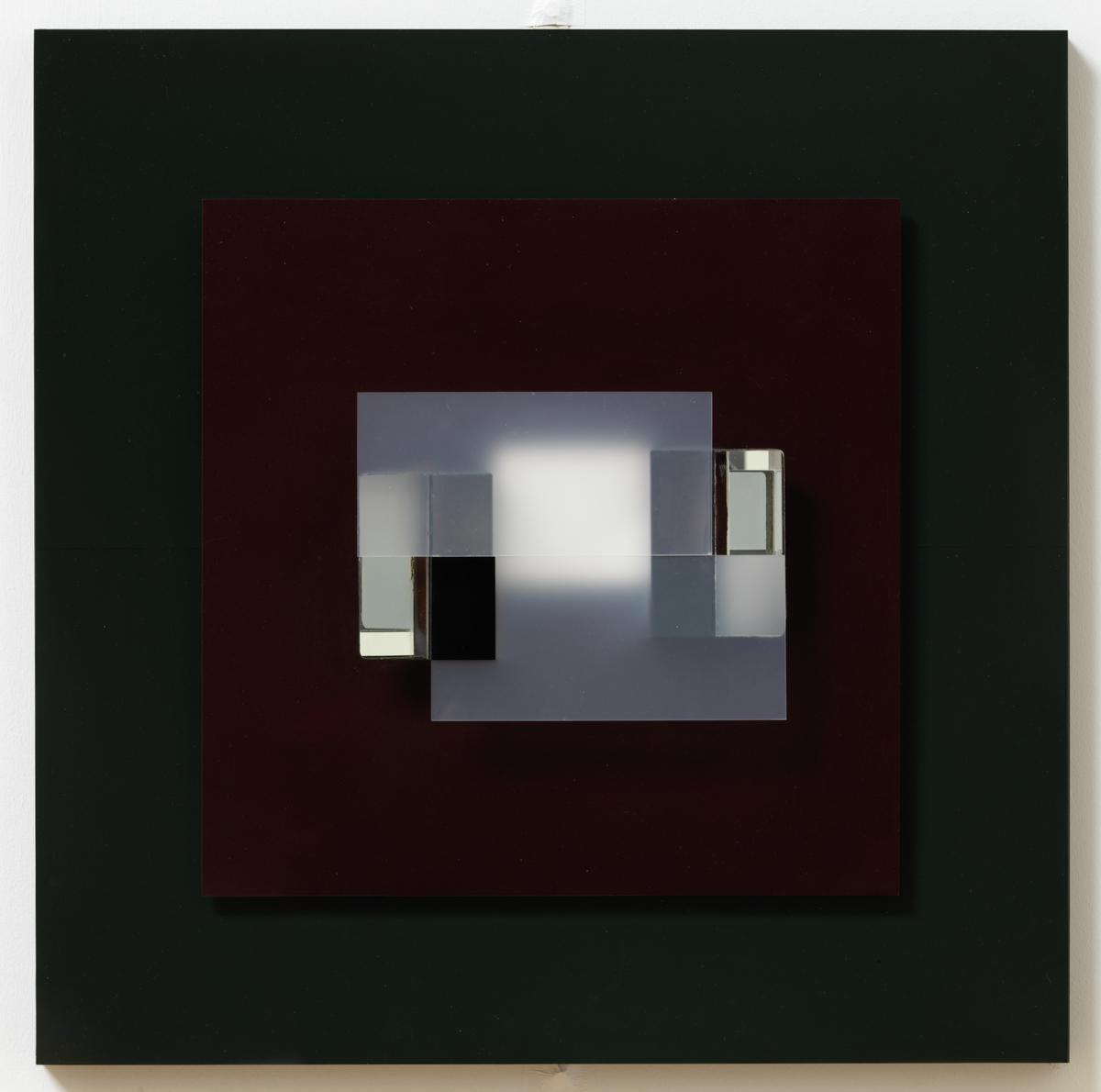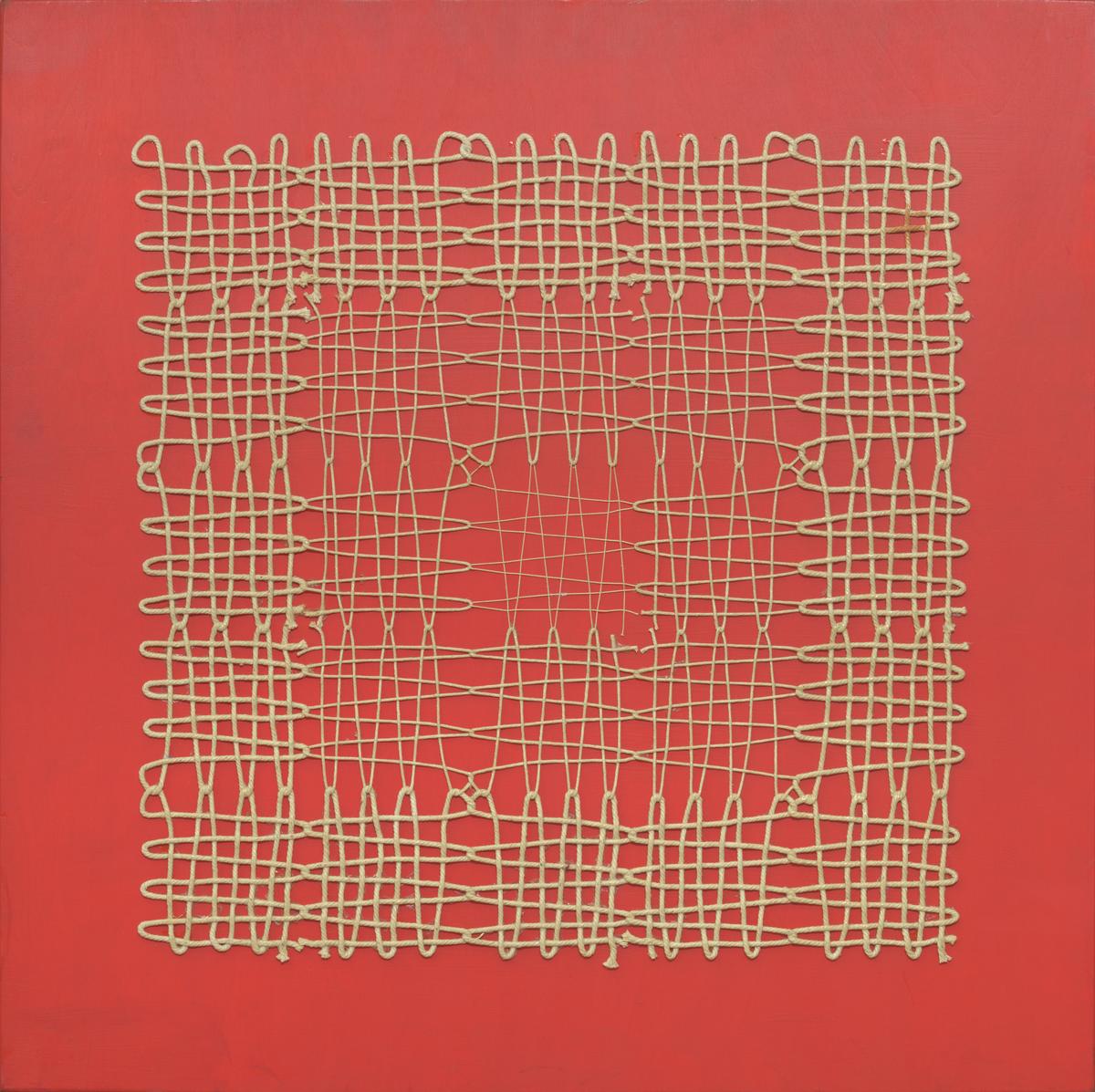13 rooms in Modern and Contemporary British Art
As Britain begins to rebuild, some artists use new materials in dialogue with modern design and architecture, believing art can help build a new society
There is hope for a new world, born out of the ashes of the old. Economic expansion alongside a growing population help create a feeling of opportunity and possibility in Europe and North America. Artists and architects embrace this international optimism. They engage with modernist ideals of progress in a world emerging from rationing and the economic austerity of the years after the war.
These ideas play out in Britain with widespread urban reconstruction and redevelopment. Artists embrace the new industrially fabricated materials used in modern architecture. This relationship between art and design produces new kinds of art – such as reliefs and mobiles – which explore real space and movement. Art often builds on mathematical or geometric structures. It is underpinned by the belief that art can improve society.
After the war, a new British government establishes the National Health Service with free universal healthcare for citizens. Alongside the post-war rebuilding of existing cities, the New Towns Act of 1946 leads to the development of new city centres. Victorian housing and bomb sites are cleared and replaced with modern towers offering light and open views. Artists in this room make works for new hospitals, schools and housing developments. Others are involved in creating new spaces to see and experience art. These play a part in the political and social changes seen in Britain.
Art in this room
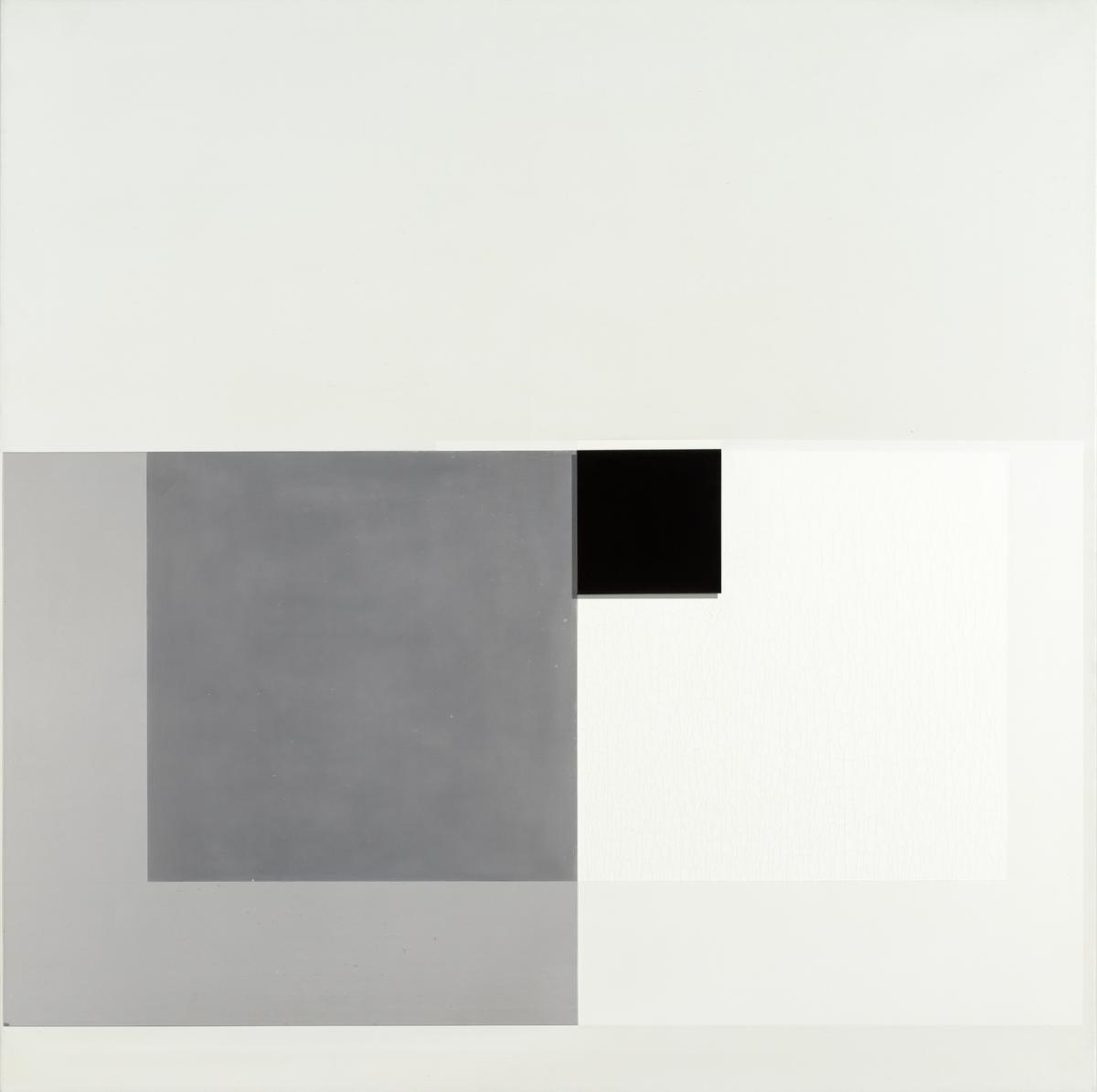
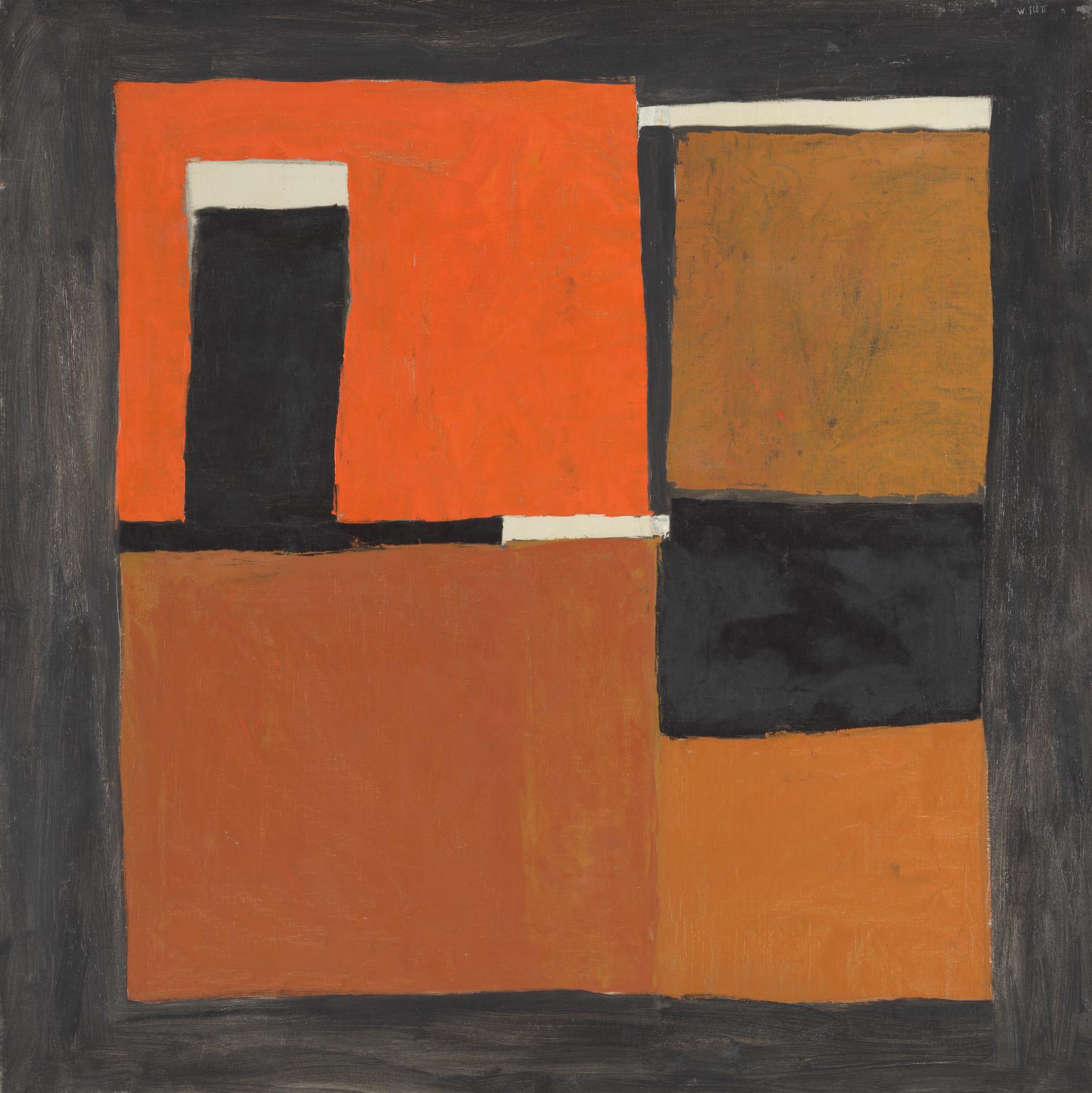
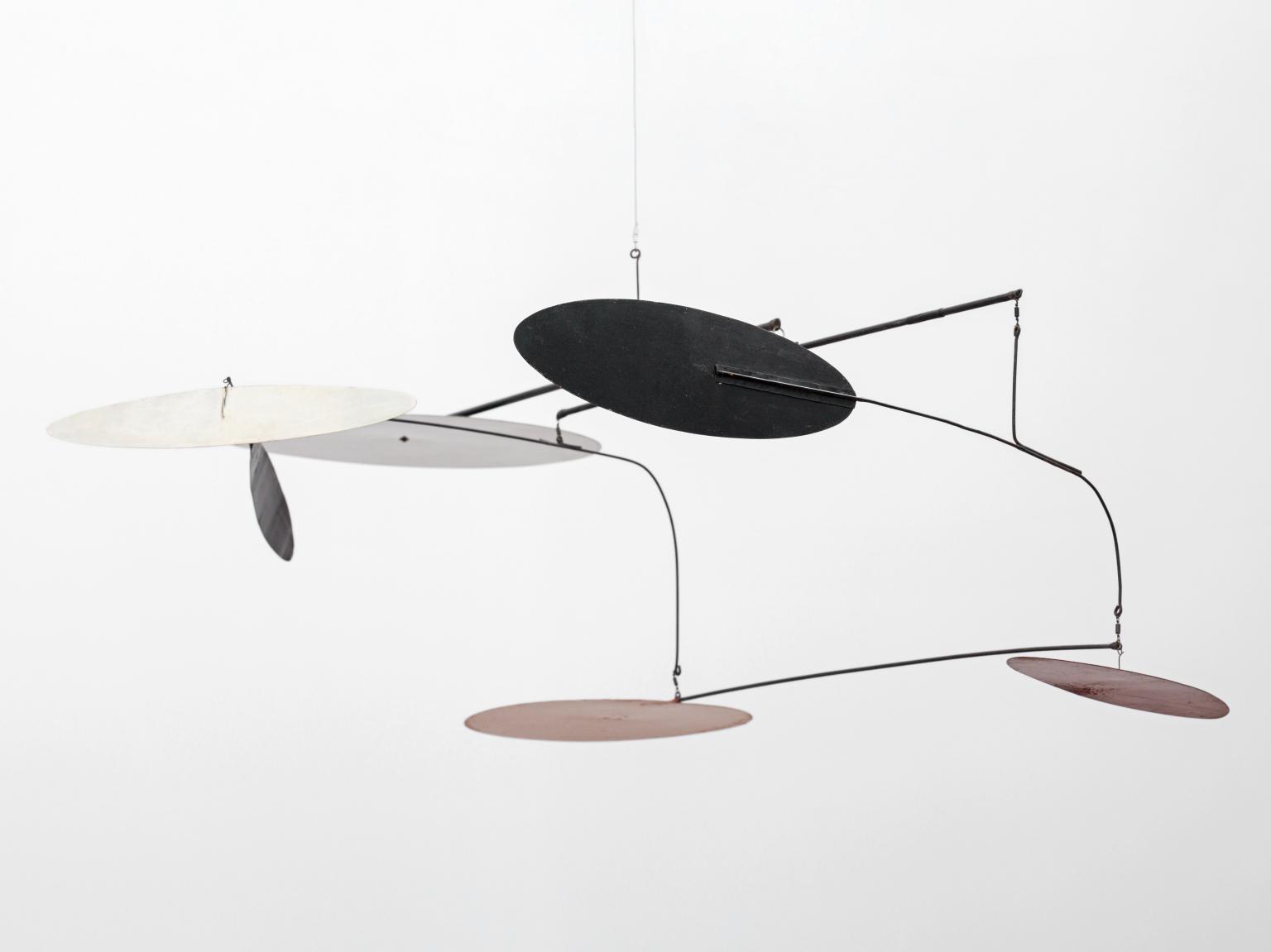
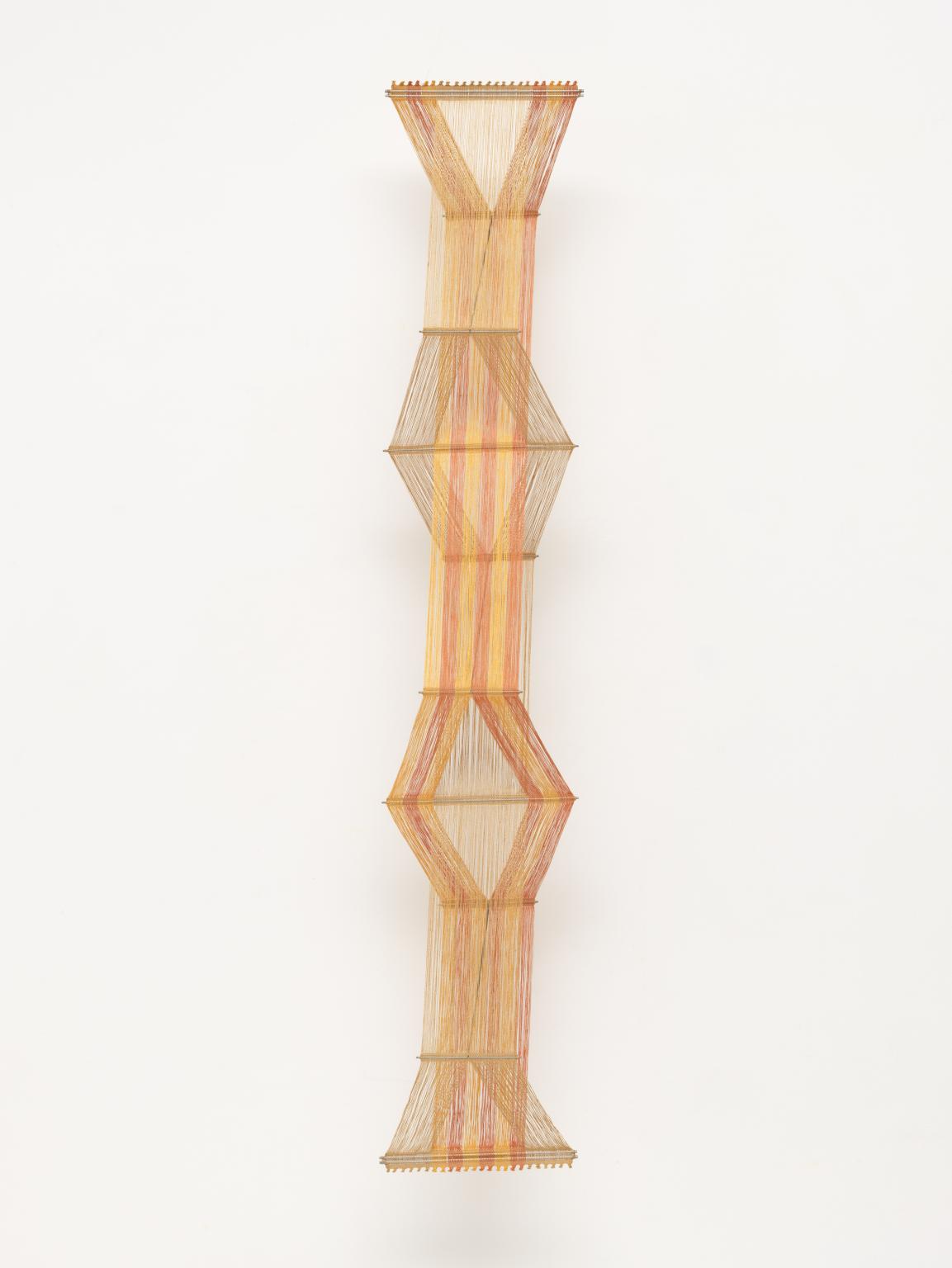
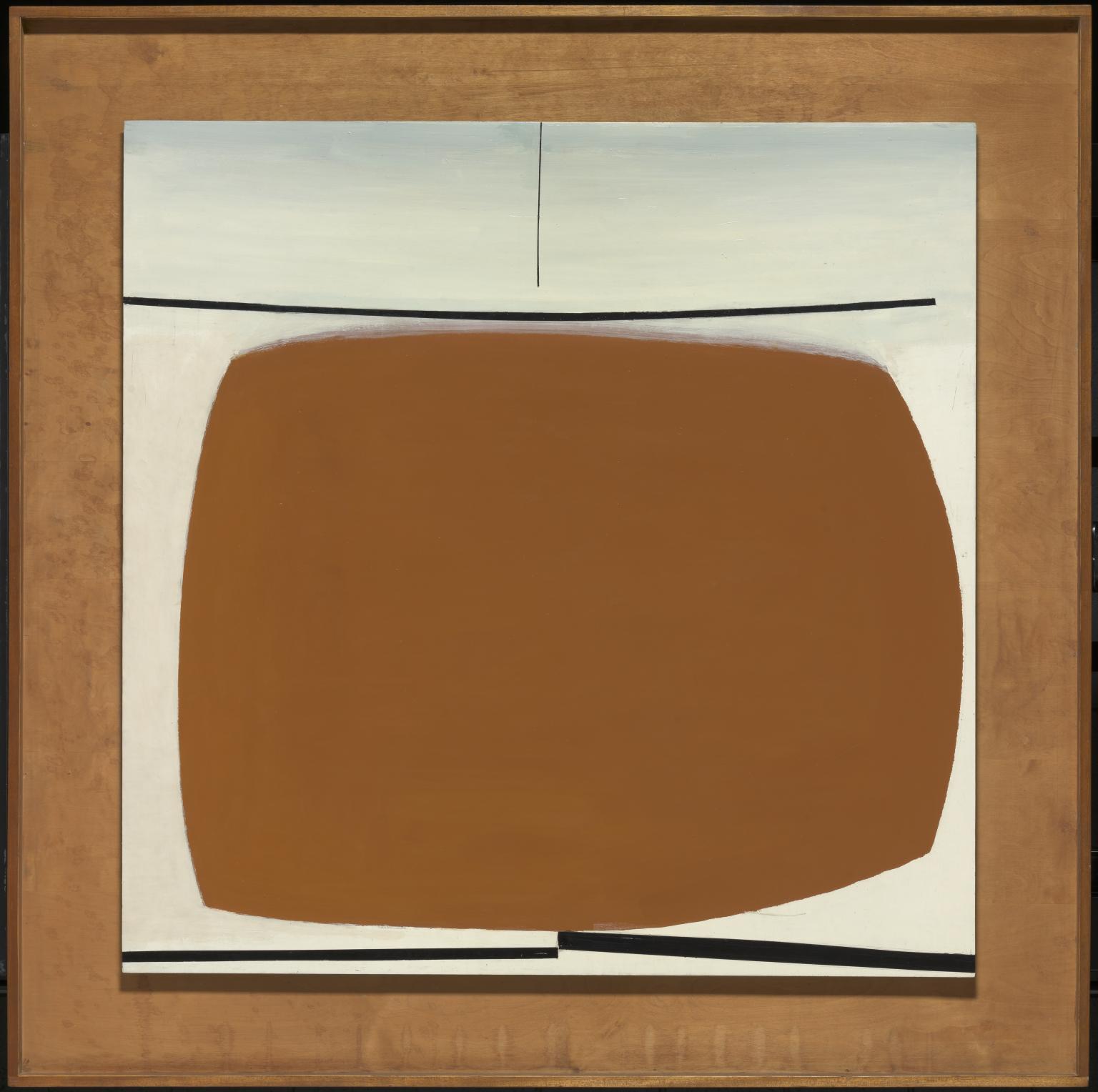
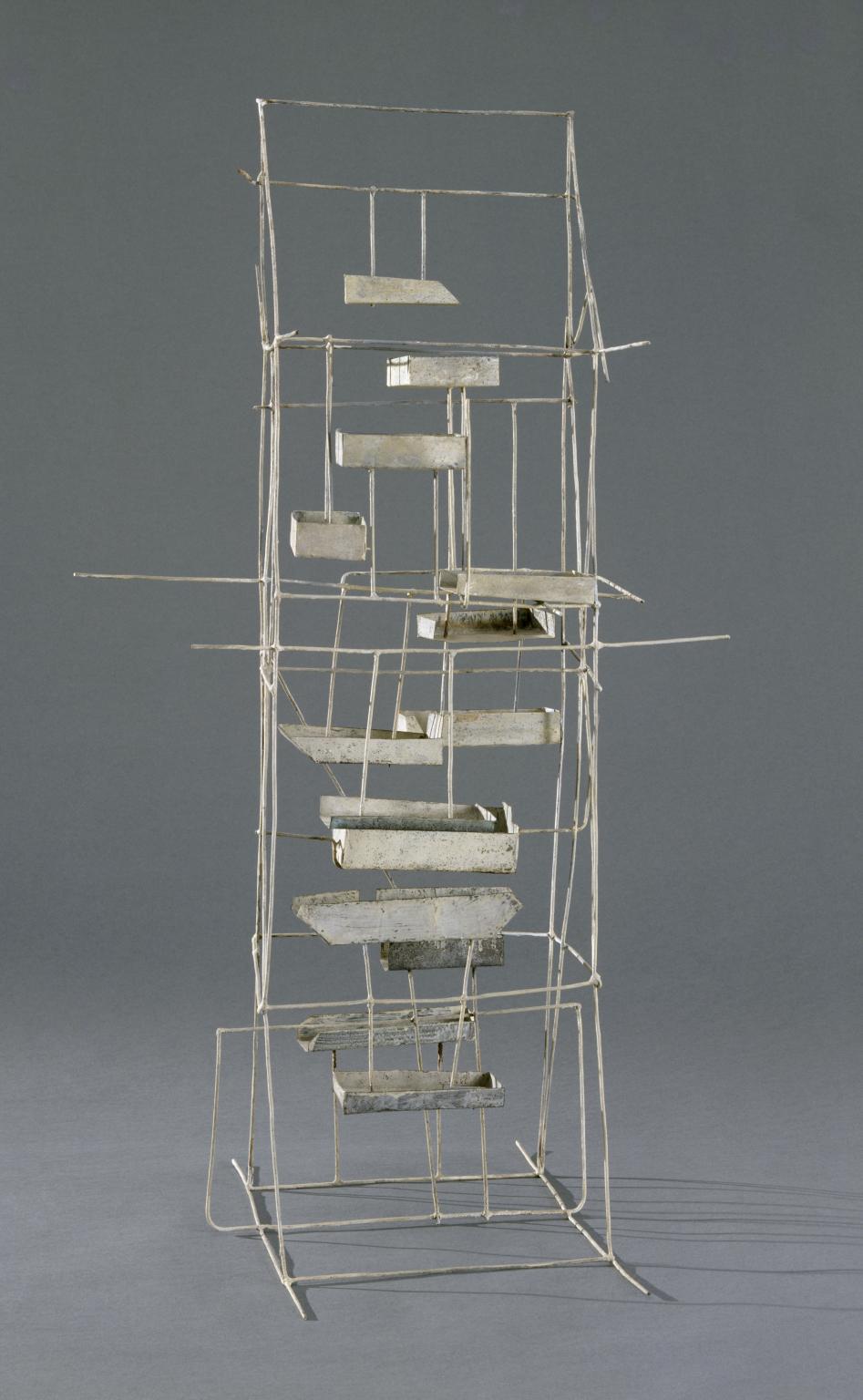
You've viewed 6/13 artworks
You've viewed 13/13 artworks

